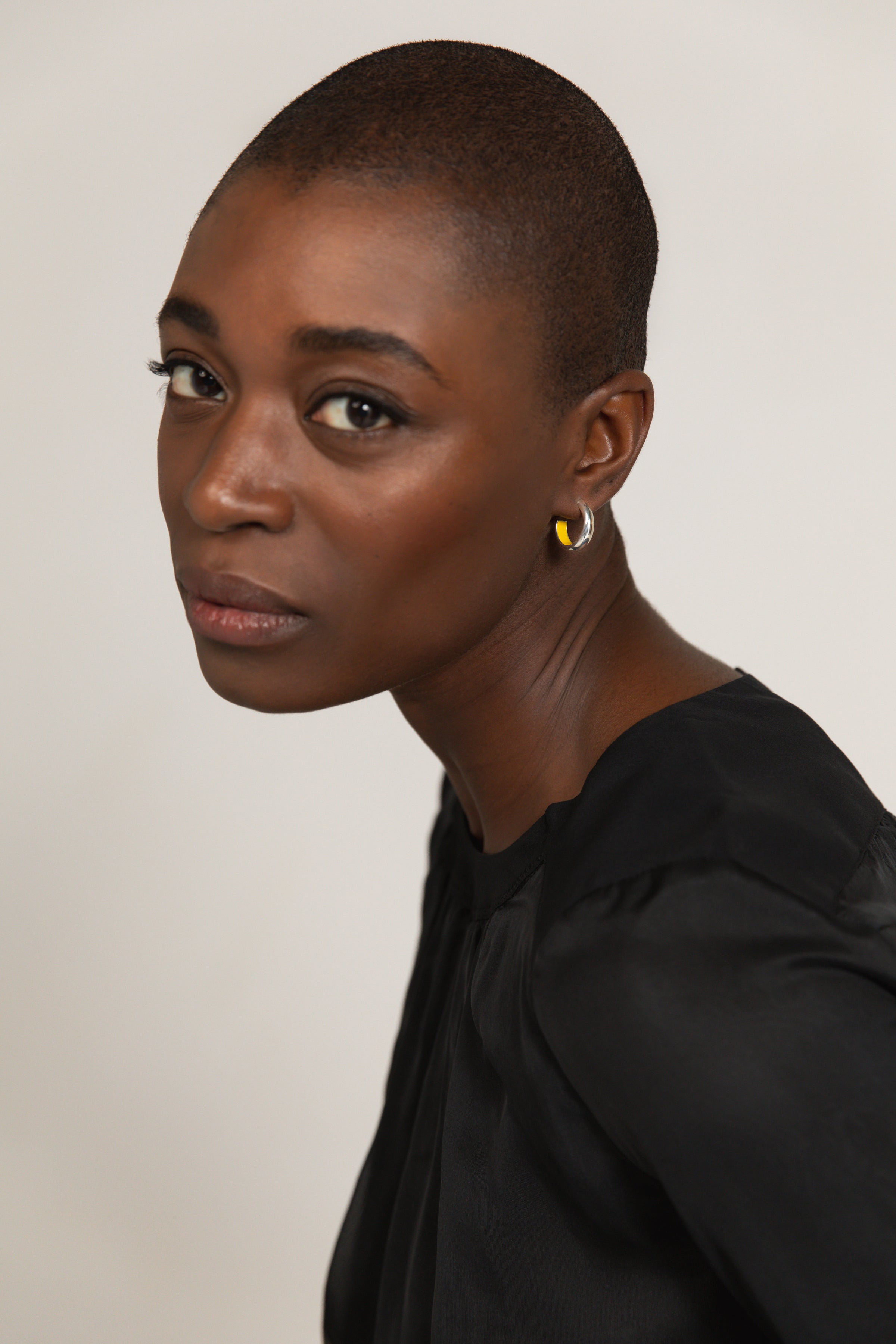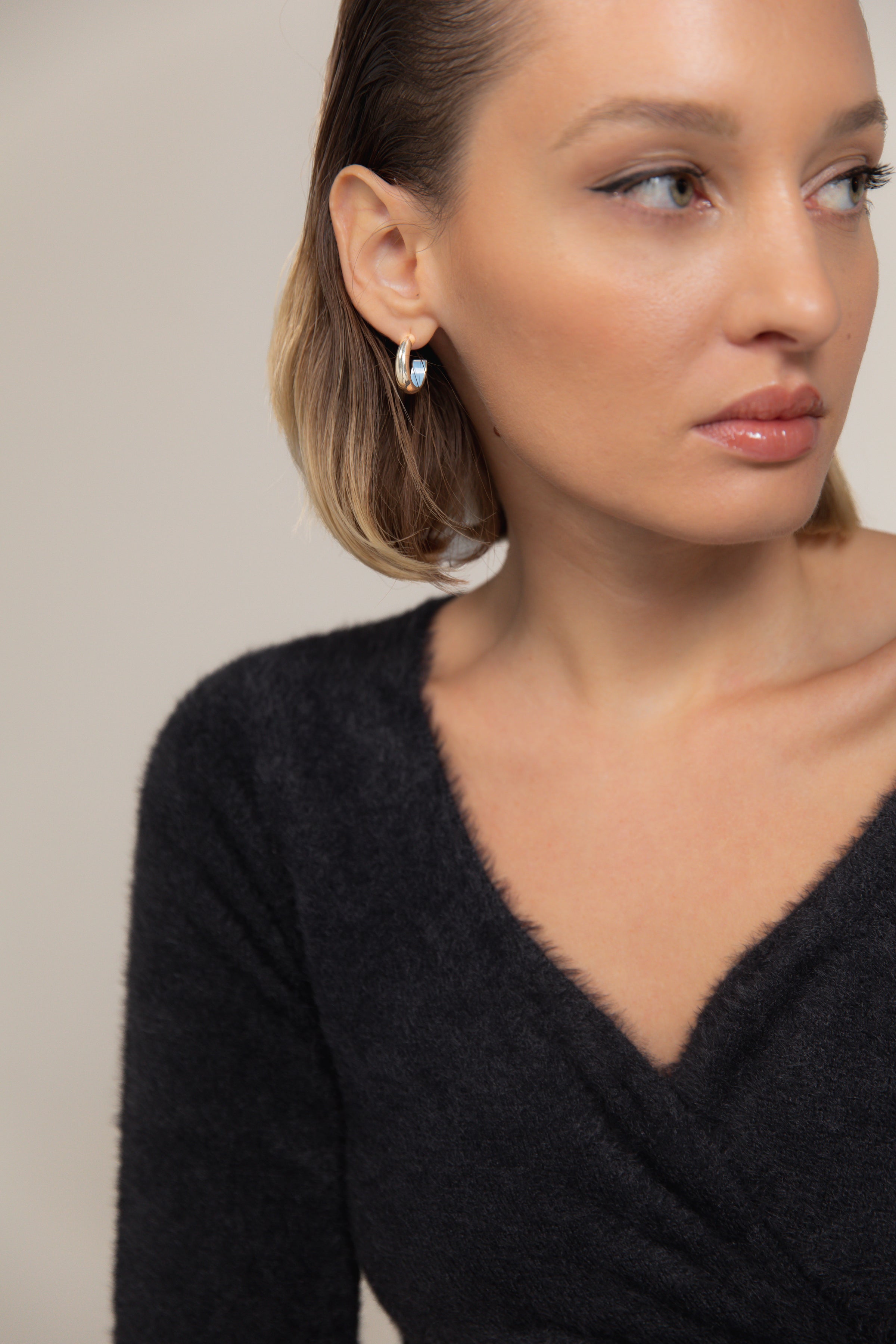
Colorful Circles: A Timeless Style Detail
The Captivating Evolution of Hoop Earrings Through the Centuries
Imagine a journey through history, where hoop earrings become the timeless symbol of class and character, adorning the ears of individuals who have shaped history. From the ancient times of Hindu deities to those of Caesar, passing through Persian princes, Egyptian pharaohs, queens, writers, sailors, slaves, dancers, and even affectionate cats, hoop earrings have been silent witnesses to extraordinary eras, capturing the imagination of legendary figures. The oldest earrings ever discovered date back to 2500 BCE in ancient Sumer, where both men and women wore hoop-like earrings, laying the foundation for this enduring classic. They adorned the ears of Egyptian dancers depicted in ancient art. Nefertiti, Hatshepsut, Tutankhamun, and Cleopatra proudly wore them, transforming hoop earrings into emblems of prestige, authority, and opulence. In ancient Rome, they adorned the ears of the privileged class.
As society evolved, so did fashion. Hoop earrings faced a decline in Europe during the 1600s, a consequence of elaborate hairstyles, headpieces, and high-collared clothing that covered the ears. However, the cyclical nature of fashion led to a resurgence in the 1700s, with small pearl-shaped earrings gaining popularity, and men starting to wear earrings in just one ear. Even the renowned playwright Shakespeare was portrayed with a hoop earring in a famous painting, adding a touch of rebellion and individuality to the fashion of the time. Meanwhile, sailors, accustomed to global adventures, wore hoop earrings as a silent sign of their maritime exploits. They weren't just symbolic accessories of their voyages around the world; they also served as insurance, as they could be sold to ensure a proper burial, even hundreds of miles away from home.

Hoop earrings experienced an intriguing resurgence in the 1920s and 30s, influenced by Spanish and Egyptian trends. The excitement for ancient traditions reached its peak with the discovery of Tutankhamun's tomb in Egypt, breathing new life into classic styles. Women of that era commonly paired hoop earrings with the fashionable short bob cuts. The talented Josephine Baker became an icon of the French dance scene during the jazz age, often sporting large hoop earrings that became her signature both on stage and in everyday life.
In the climate of change and emancipation in the 60s and 70s, women embraced female strength, highlighted by hoop earrings. The designs of these jewels were influenced by African American and Latina communities, as well as styles from India and the Middle East. Hoop earrings became a symbol of the feminist movement, chosen as an accessory to convey a message of strength and independence. Chrome silver hoop pendants with dynamic and tribal designs became a true trend: stars like Cher and Diana Ross loved flaunting sophisticated-looking hoop earrings.
Celebrities such as Diana Ross and Jennifer Lopez showcased them as expressions of creativity and individuality, conveying a message of autonomy beyond the realm of entertainment. These earrings were not just accessories; they transformed into symbols of rebellion and individuality, making a bold statement in the evolved world of fashion and self-expression.

The beauty of hoop earrings lies in their versatility, adapting to different styles and outfits. For those who prefer a minimalist aesthetic, small gold or silver hoops stand the test of time, adding sophistication to both casual and formal attire.
From Kate Middleton, who wears them on official occasions, to international celebrities like Emma Watson, who has embraced this timeless classic, hoop earrings have become a stylish element loved by women from different social classes and professions. With all this history behind them, you could say that hoop earrings don't follow a temporary trend – they never truly disappeared. Today, they symbolize independence, resilience, and empowerment, carrying profound and historical meanings.
Our Etch earrings stand out with a unique feature: an enamel interior that subtly reveals its color only at specific angles, creating an intriguing play of light and shade. They may appear as classic silver hoops, embodying understated elegance. However, it is in the subtle movements that the hidden beauty of the enamel interior is unveiled.















